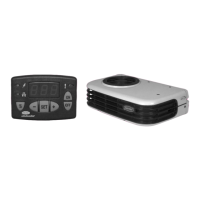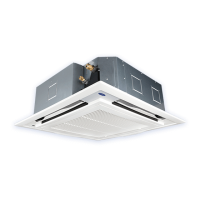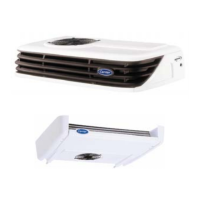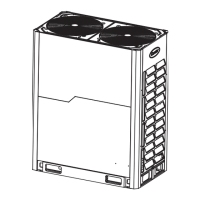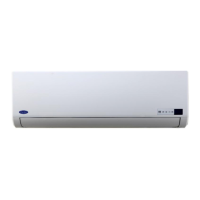2
Power the unit off before cleaning it to avoid electric
shocks.
Install an earth leak detector to avoid electric shocks and
fires.
Ensure the air conditioner is grounded.
To avoid electric shocks, ensure the unit is grounded and that
the earth wire is not connected to a gas or water pipe,
lightning conductor, or telephone earth wire.
To avoid injury, do not remove the fan guard of the
outdoor unit.
Do not touch the unit with wet hands
because you may get an electric shock.
Do not touch the heat exchanger fins because you may
receive serious cuts.
After a long use, check the unit stand and fitting for
damage.
If damaged, the unit may fall.
To avoid oxygen deficiency, ventilate the room
sufficiently if equipment with a burner is used at the
same time as the air conditioner.
Arrange the drainage hose to ensure smooth drainage.
Incomplete drainage may cause water leaks.
Never expose children, plants or animals directly to the
air flow.
Avoid places that amplify the noise or create noise
pollution for others.
Noise can be amplified by anything that blocks the air
outlet of the outdoor unit.
Choose a place to dissipate noise and hot or cold air
from the outdoor unit that doesn’t affect others or harm
animals or plants.
Do not allow a child to mount on the outdoor unit and
don’t place objects on it.
Do not run the air conditioner when fumigating a room
with insecticide as chemicals could get in the unit,
causing respiratory problems for people affected.
Do not place appliances that produce open fire in places
in the path of the air flow from the unit or under the
indoor unit due to the risk of combustion or warping.
To avoid fire, do not install the air conditioner where
flammable gas may leak from.
Children and the elderly should not operate the unit.
Children should not play with the unit. Don't leave young
children unsupervised.
2. PARTS NAMES
3. OPERATION AND PERFORMANCE
Owner's manual
●
●
NOTE
Diagrams in this manual are for illustration purpose only. The
appearance and functions described here may differ from the
model you've purchased. Please refer to the actual product.
Don't insert any object into the unit.
Preheat the unit for at least 12 hours before use. Do not power
the unit off if you won’t be using it for less than 24 hours. (This
is to heat the crank case heater so as to prevent the
compressor from starting with liquid.)
Make sure the air inlet and outlet are not blocked, or it may
degrade the performance of air conditioner or activate the
protector which will stop the unit from running.
Fig.2-1
Cooling and heating operation of inverter central DC
The indoor unit can be controlled on its own. It cannot cool and
heat at the same time.
For any problems with the cooling and heating modes, find the
problem via the settings of the outdoor unit’s dial code S5.
1. If you set the unit to Heating Priority mode, the indoor unit
running in Cooling or Fan mode stops, the operation panel
displays Non-priority or Standby, but the indoor unit running in
Heating mode will run continuously.
2. If you set the unit to Cooling Priority mode, the indoor unit
running in Heating or Fan mode stops, the operation panel
displays Non-priority or Standby, but the indoor unit running in
Cooling mode will run continuously.
3. If you set the unit to No. 63 (VIP indoor unit) + Voting Priority
mode, and set and start the No. 63 indoor unit, the operation
mode of the No. 63 unit will be the priority operation mode of the
system. If you do not set or start the No. 63 indoor unit, the
mode used by a majority of indoor units will be the priority
operation mode of the system.
1
2
4
1
3
4
Air inlet (on the left and right sides, and at the rear. )
Refrigerant pipe connective opening and wires outlet
Fixed foot
Air outlet (heats air to be blown out for cooling and vice versa)
1
2
3
4
The figure shown above is for reference only, and the actual
product may be different.
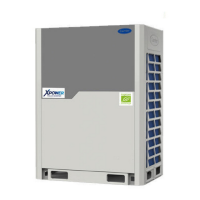
